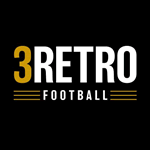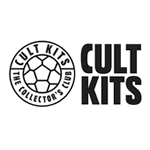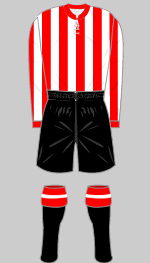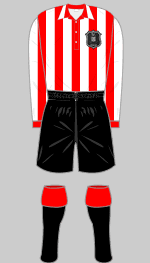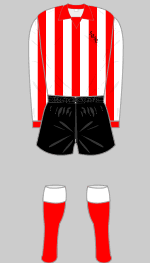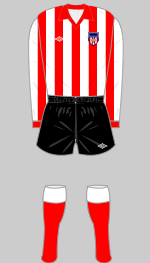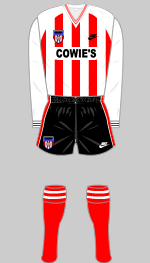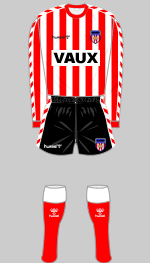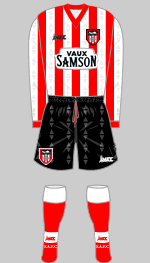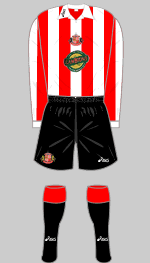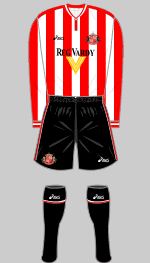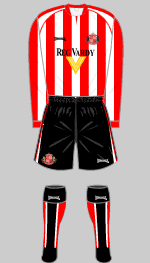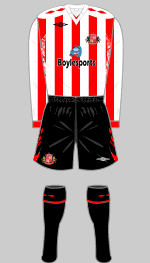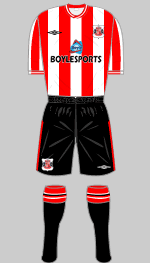Kit History
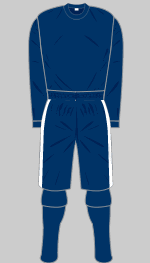
1880-Dec 84 a l u v w
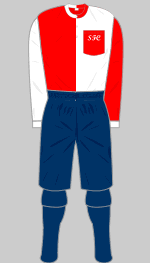
Dec 1884-1886 t u v
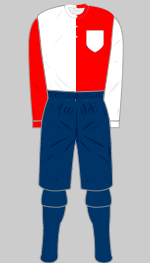
1886-1887 u
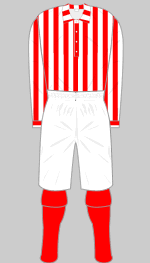
1887-1888 u w
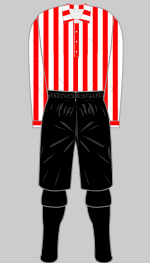
1888-1889 u
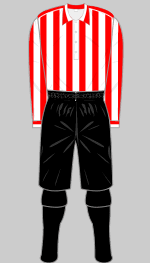
1889-1893 t u
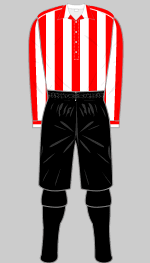
1893-1896 a h l r t u
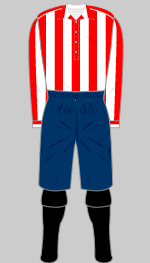
1896-1899 E
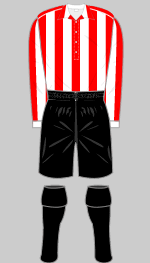
1900-1904 b h r t u
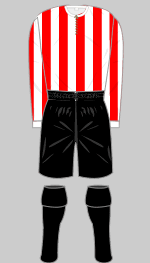
1904-1905 1 t u
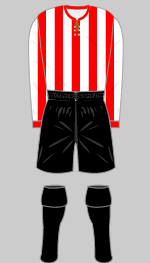
1904-1906 u
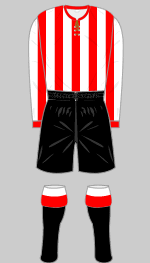
1906-1907 u
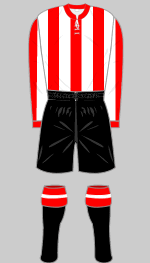
1907-1908 u
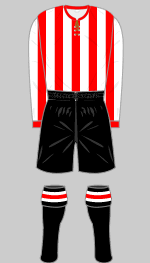
1908-1909 s t u
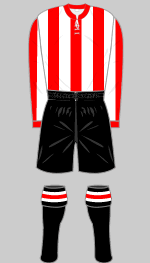
1909-1910 t
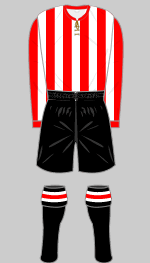
1910-1912 a t u
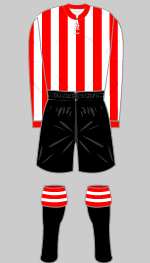
1919-1921 t
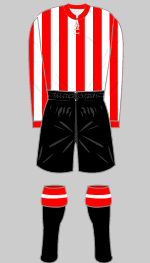
1921-1922 b q r t
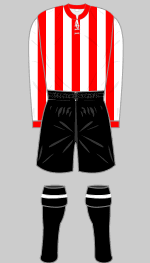
1922-1923 t
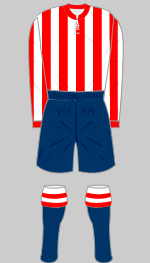
1923-1924 t
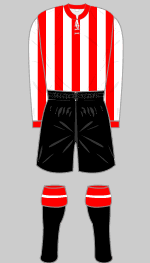
1926-1930 t D
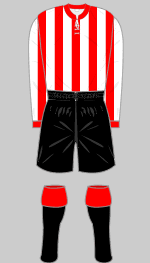
1930-1931 r
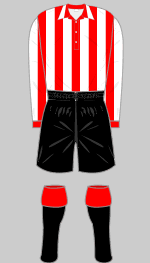
1931-1937 g
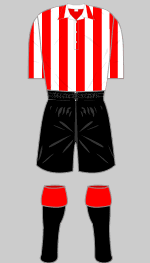
1938-1939 t
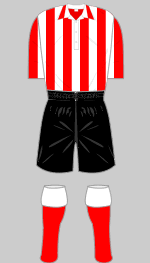
1939-1945 a b
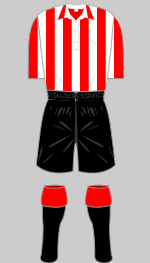
1945-1948 t
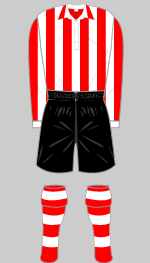
1948-1951 q t
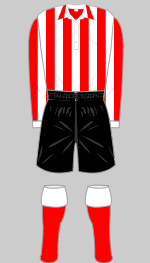
1951-1955 a b
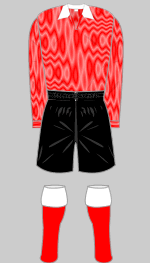
1955-1956 Special x
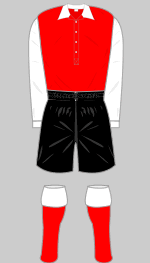
3 March 1956 y
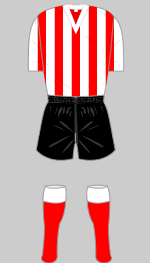
1955-1958 b t q
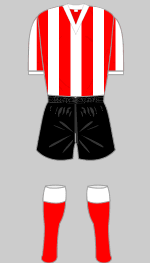
1958-1959 t
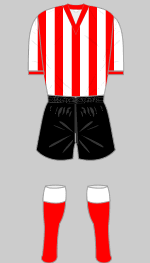
1959-1961 q
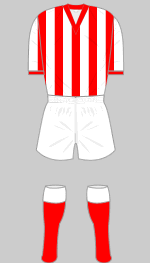
1961-1964 b i r
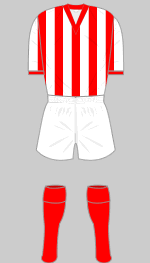
1964-1965 t
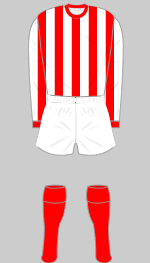
1965-1969 b r t
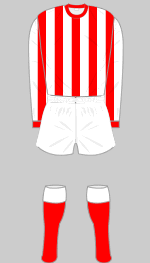
1969-Oct 1972 b c n o
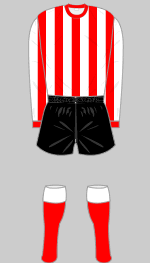
Oct 1972-1973 u
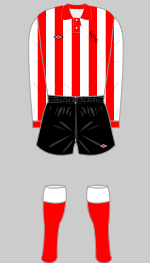
1975-1976 b i o
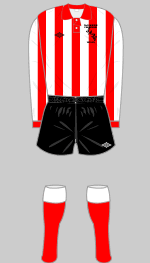
1976-1977 C
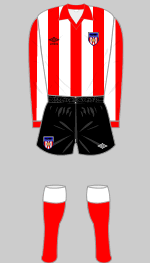
1980-1981 b d j o C
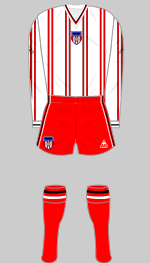
1981-1983 f
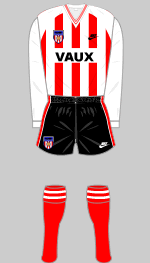
1985-1986 d k
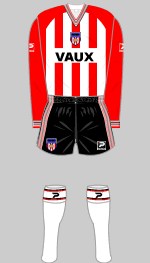
1986-1988 d j
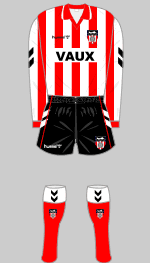
1991-1994 b d f k
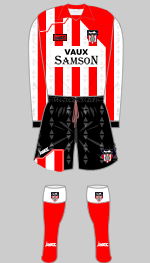
1994-1996 d f z B
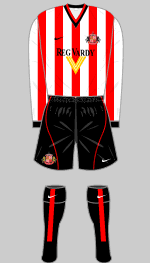
2000-2002 d f
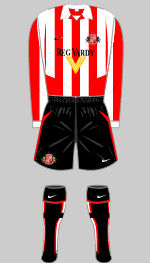
2002-2004 d
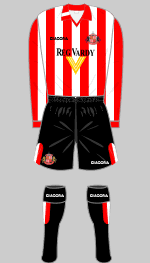
2004-2005 d
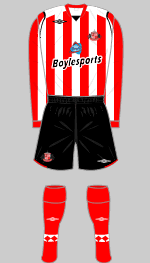
2008-2009 a
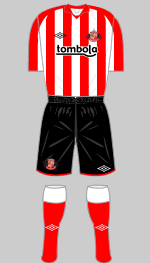
2010-2011 a
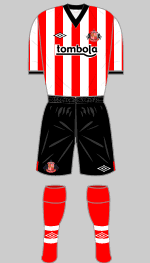
2011-2012 a u
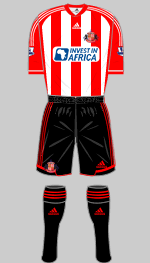
2012-2013 a
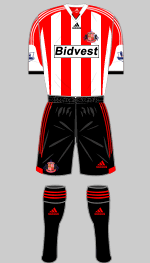
2013-2014 a
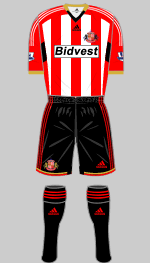
2014-2015 a
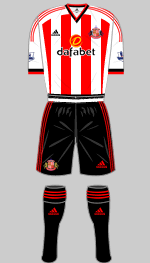
2015-2016 a
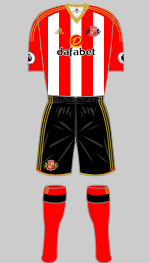
2016-2017 a
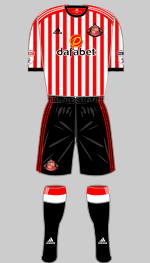
2017-2018 a
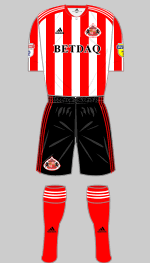
2018-2019 Home a
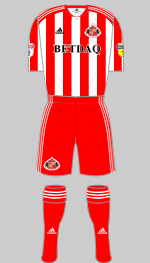
2018-2019 Away a
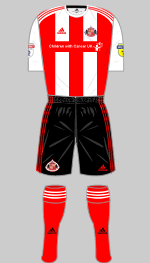
2019-2020 a
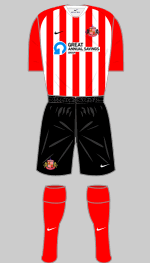
2020-2021 a
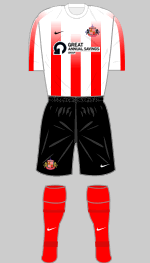
2021-2022 a
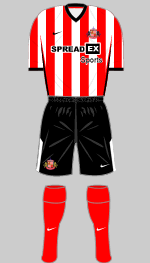
2022-2023 a
Background
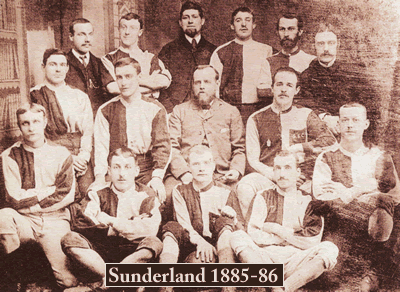 James Allen, a teacher at the
Hendon Board School, formed the club with some of his colleagues in 1879
as Sunderland & District Teachers AFC. A year later the club opened
its membership to non-teachers and became Sunderland AFC. In 1884 Sunderland won their first trophy, the Durham Senior Cup.
James Allen, a teacher at the
Hendon Board School, formed the club with some of his colleagues in 1879
as Sunderland & District Teachers AFC. A year later the club opened
its membership to non-teachers and became Sunderland AFC. In 1884 Sunderland won their first trophy, the Durham Senior Cup.
In December 1884 the club dropped their original all-navy colours in favour of red and white but the familiar stripes did not appear until 24 September 1887. Instead, the team turned out in halved shirts with individual differences as was common at the time. The players provided their own knickerbockers in white, navy or black. (An alternate version is given on the club's website which states that stripes were introduced in September 1886 and worn interchangeably with the halved tops.)
In 1887, with professionalism now legal, players began to arrive from Scotland (where payments were still outlawed). A number of established players, seeing their places in the team being taken by these newcomers, set up the rival Sunderland Albion. Rivalry was intense but with wealthy directors from the coal and shipbuilding industry, Sunderland were able to build the stronger side, dubbed “The Team of All the Talents" and Albion eventually closed down in 1892.
In 1890 they became the first new club to be voted into the Football League, replacing Stoke. As the only club from the north-east in the competition, Sunderland was not a popular destination and they had to agree to pay their visitors’ traveling expenses. They made their intentions clear by erecting a sign outside the ground stating, “We have arrived and we’re staying here.”
It was not long before the chippy newcomers made their mark, winning
the League championship in 1892, 1893 and 1895 (they were runners up in
1894). In 1898 the club moved into their new Roker Park stadium, 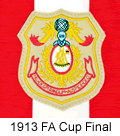 which
could hold 30,000 spectators. In 1902 Sunderland won their fourth League
title
which
could hold 30,000 spectators. In 1902 Sunderland won their fourth League
title
Their fifth title came in 1913 and they almost completed “the double,”
losing 0-1 to Aston Villa in front of a record 120,000 spectators at Crystal
Palace in the FA Cup final. In this match the team wore the coat of arms of Sunderland on their 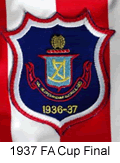 shirts.
shirts.
During the 1920s “The Roker Men” had a relatively lean time but regularly finished near the top of the First Division. The club’s sixth championship title came in 1936 and a year later they won the FA Cup for the first time. A simplified version of Sunderland's coat of arms was worn in the final and in many league matches the following season.
After the Second World War, huge crowds flocked to Roker Park and the directors’ policy of paying large transfer fees earned them the nickname of “The Bank of England.” Sunderland were one of the first clubs to install floodlights (1952) and in the mid 50s the team played against the likes of Moscow Dynamo and Hearts wearing a set of flame red shirts in shiny material to aid visibility. In March 1956 they were drawn against Newcastle in the FA Cup sixth round and wore a set of red shirts with white sleeves (probably borrowed) while Newcastle wore their white change shirts.
High spending did not bring success and in 1958 Sunderland were relegated to the Second Division after 68 years in the top flight, a record only recently surpassed by Arsenal.
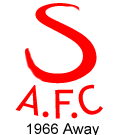 During the early 1960s the club played in white shorts as they tried
to rebuild and in 1964 they were promoted back to Division One. From 1966 until at least 1970 the team wore a simple monogram on their all-white and all-red change strips but this never appeared on their striped "home" shirts. They were
never far from the foot of the table and in 1970 they dropped back into
Division Two. When Bob Stokoe was appointed as manager in October 1972 his first act was to restore the traditional black shorts, which was greeted
During the early 1960s the club played in white shorts as they tried
to rebuild and in 1964 they were promoted back to Division One. From 1966 until at least 1970 the team wore a simple monogram on their all-white and all-red change strips but this never appeared on their striped "home" shirts. They were
never far from the foot of the table and in 1970 they dropped back into
Division Two. When Bob Stokoe was appointed as manager in October 1972 his first act was to restore the traditional black shorts, which was greeted 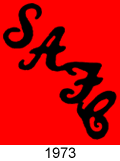 enthusiastically by supporters.
enthusiastically by supporters.
In 1973, while still in the Second Division, Sunderland reached the FA Cup final where they met the holders Leeds United, then at the height of their powers. The rank outsiders famously won the match by the only goal to record one of the most romantic FA Cup feats ever. No doubt due to this success, the monogram (technically a "cypher") worn in the final became a permanent feature for the next four seasons.
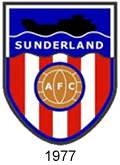 It took until
1976 for Sunderland to regain their place in Division One but a disastrous
season saw them relegated immediately in 1977. For the 1977-78 season a new crest was introduced that featured a ship (to symbolise the town's association with shipbuilding) above the club's signature stripes. This had in fact been the club's official crest since 1972 but had not been incorporated into the team's shirts.
It took until
1976 for Sunderland to regain their place in Division One but a disastrous
season saw them relegated immediately in 1977. For the 1977-78 season a new crest was introduced that featured a ship (to symbolise the town's association with shipbuilding) above the club's signature stripes. This had in fact been the club's official crest since 1972 but had not been incorporated into the team's shirts.
In 1980 Sunderland returned to the top flight. The traditional kit was
abandoned between 1981 and 1983 for an odd concoction designed by French
firm Le Coq Sportif. This proved deeply unpopular and was replaced in
1983 with a more traditional design. Despite these sartorial changes,
Sunderland struggled near the foot of the table every season until they
were relegated in 1985. Then in 1987, the unthinkable happened and they
were relegated again, this time through the new play-off system to Division
Three. The humiliation was short lived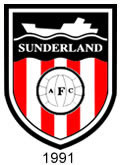 and the club stormed to the Third
Division championship. Only two seasons later, in 1990, Sunderland returned
to Division One in extraordinary circumstances. They were beaten in the
play-off final by Swindon Town but the Wiltshire club were later denied
promotion as a punishment for making illegal payments to players and Sunderland
went up instead.
and the club stormed to the Third
Division championship. Only two seasons later, in 1990, Sunderland returned
to Division One in extraordinary circumstances. They were beaten in the
play-off final by Swindon Town but the Wiltshire club were later denied
promotion as a punishment for making illegal payments to players and Sunderland
went up instead.
From 1991, the clubs crest was modified slightly: the colours were simplified and the ship and the football were reversed out.
The return was brief and Sunderland were back in Division Two after one
season. They 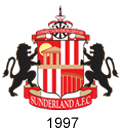 returned to the top tier in 1996 but went down immediately.
returned to the top tier in 1996 but went down immediately.
In 1997, after 99 years at Roker Park, Sunderland moved into their brand new Stadium of Light, one of the most impressive grounds in the country at the time. A competition was launched to find a new nickname for the club, with over half of the 11,000 fans who participated voting for “The Black Cats.” An interesting account of the association between the club and black cats can be found on the club’s web site. A new badge was also introduced. The ship was dropped (the shipbuilding industry was by now long gone) and two local landmarks were added. Above the shield is a winding wheel (the Stadium of Light was built on the site of the Monkwearmouth Colliery). The traditional red and white stripes, so beloved by the passionate supporters of this community minded club, remained.
In the new millennium Sunderland have continued to move between the top two tiers with some regularity. In March 2013 the club courted controversy by appointing Paulo di Canio as manager. The former Italian international had previously made several public statements in support of fascism, prompting the former Shadow Foreign Secretary, David Milliband to resign as club vice chairman. The Durham Miners' Association removed its banner from the Stadium of Light in protest. Di Canio's aggressive approach to management led to his dismissal after players protested to the Chief Executive about his "systematic destruction of the players' self-esteem and self worth." A succession of managers came and went while the team struggled to avoid relegation until 2016-17, when they dropped into the second tier after 10 years in the Premier League.
Worse was to come. The following season Sunderland finished bottom and were relegated to League One, only the second time they had found themselves in the third tier. In April 2018, after sacking their manager the owner, Ellis Short cleared the club's debts and sold it to an international consortium led by Stewart Donald, the chairman of Eastleigh FC. To underline their fresh start it was decided that the team would wear red shorts with their striped tops. The reaction from supporters was overwhelmingly negative and it was decided they would play in black shorts at The Stadium of Light and red shorts away from home.
The team found it hard to escape League One: they did reach the play-offs in 2020-21 but were beaten by Lincoln City at the semi-final stage. They had the consolation of winning the EFL Trophy, beating Tranmere Rovers in March 2021 at Wembley behind closed doors. The following season, 2021-22, the Black Cats reached the play-off final where they beat Wycombe Wanderers to return to the Championship.
Sources
- (a) Sunderland Official Web site
- (b) Football Focus
- (c) Football Cards
- (d) True Colours (John Devlin 2005)
- (e) Club Colours (Bob Bickerton 1998)
- (f) Sporting Heroes
- (g) One Hundred Years of Goodison Glory (Ken Rogers 1992)
- (h) Association of Football Statisticians - provided by Pete Wyatt
- (i) Pete's Picture Palace
- (j) Iain Affleck
- (k) David King
- (l) safc blog
- (m) Football Shirt Culture
- (n) Football League Review
- (o) Alick Milne
- (p) Toffs
- (q) Simon Monks
- (r) SAFC Photo Archive
- (s) British Film Institute Archive (Youtube)
- (t) Keith Ellis (HFK Research Associate)
- (u) Paul Robinson
- (v) Pioneers of the North (Paul Joannou & Alan Candlish, Breedon Books 2009)
- (w) Michael Peters
- (x) British Pathe courtesy of Graham Brack
- (y) YouTube courtesy of Graham Brack
- (z) Dean Barker
- (A) Old Football Shirts
- (B) Glyn Jefferson
- (C) Tony Sealey
- (D) Lancashire Evening Post 19 June 1926 submitted by Richard Essen
- (E) The Evening Telegraph (Sept 3 1896), Pearson's Weekly (Sept 3 1898) submitted by Graham Brack
Crests are the property of Sunderland AFC.



